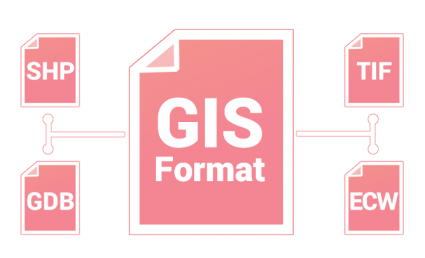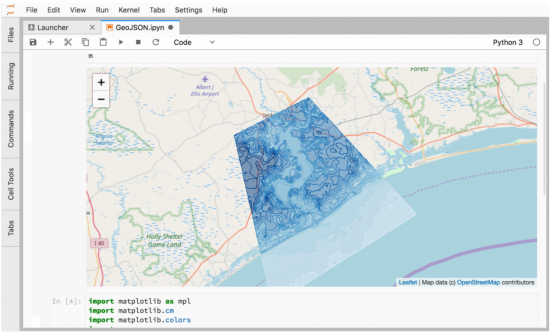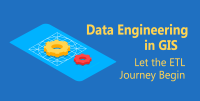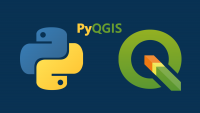15 Python Libraries for GIS and Mapping

Python Libraries for GIS and Mapping
Python libraries are the ultimate extension in GIS because they allow you to boost its core functionality.
By using Python libraries, you can break out of the mold that is GIS and dive into some serious data science.
There are 200+ standard libraries in Python. But there are thousands of third-party libraries too. So, it’s endless how far you can take it.
Today, it’s all about Python libraries in GIS. Specifically, what are the most popular Python packages that GIS professionals use today? Let’s get started.
READ MORE: GIS Programming Tutorials: Learn How to Code
First, why even use Python libraries for GIS?
Have you ever noticed how GIS is missing that one capability you need it to do? Because no GIS software can do it all, Python libraries can add that extra functionality you need.
Put simply, a Python library is code someone else has written to make life easier for the rest of us. Developers have written open libraries for machine learning, reporting, graphing, and almost everything in Python.
If you want this extra functionality, you can leverage those libraries by importing them into your Python script. From here, you can call functions that aren’t natively part of your core GIS software.
Python Libraries for GIS
If you’re going to build an all-star team for GIS Python libraries, this would be it. They all help you go beyond the typical managing, analyzing, and visualizing of spatial data. That is the true definition of a Geographic Information System.
PRO TIP: Use pip to install and manage your packages in Python
1. Arcpy
If you use Esri ArcGIS, then you’re probably familiar with the ArcPy library. ArcPy is meant for geoprocessing operations. But it’s not only for spatial analysis, it’s also for data conversion, management, and map production with Esri ArcGIS.
2. Geopandas
Geopandas is like pandas meet GIS. But instead of straightforward tabular analysis, the Geopandas library adds a geographic component. For overlay operations, Geopandas uses Fiona and Shapely, which are Python libraries of their own.
3. GDAL/OGR
The GDAL/OGR library is used for translating between GIS formats and extensions. QGIS, ArcGIS, ERDAS, ENVI, GRASS GIS and almost all GIS software use it for translation in some way. At this time, GDAL/OGR supports 97 vector and 162 raster drivers.

4. RSGISLib
The RSGISLib library is a set of remote sensing tools for raster processing and analysis. To name a few, it classifies, filters, and performs statistics on imagery. My personal favorite is the module for object-based segmentation and classification (GEOBIA).
5. PyProj
The main purpose of the PyProj library is how it works with spatial referencing systems. It can project and transform coordinates with a range of geographic reference systems. PyProj can also perform geodetic calculations and distances for any given datum.
Python Libraries for Data Science
Data science extracts insights from data. It takes data and tries to make sense of it, such as by plotting it graphically or using machine learning. This list of Python libraries can do exactly this for you.
6. NumPy
Numerical Python (NumPy library) takes your attribute table and puts it in a structured array. Once it’s in a structured array, it’s much faster for any scientific computing. One of the best things about it is how you can work with other Python libraries like SciPy for heavy statistical operations.
7. Matplotlib
When you’re working with thousands of data points, sometimes the best thing to do is plot it all out. Enter Matplotlib. Statisticians use the Matplotlib library for visual display. Matplotlib does it all. It plots graphs, charts, and maps. Even with big data, it’s decent at crunching numbers.

8. Pandas
The Pandas library is immensely popular for data wrangling. It’s not only for statisticians. But it’s incredibly useful in GIS too. Computational performance is key for pandas. The success of Pandas lies in its data frame. Data frames are optimized to work with big data. They’re optimized to such a point that it’s something that Microsoft Excel wouldn’t even be able to handle.
9. Re (regular expressions)
Regular expressions (Re) are the ultimate filtering tool. When there’s a specific string you want to hunt down in a table, this is your go-to library. But you can take it a bit further like detecting, extracting, and replacing with pattern matching.
10. ipyleaflet
If you want to create interactive maps, ipyleaflet is a fusion of Jupyter notebook and Leaflet. You can control an assortment of customizations like loading basemaps, geojson, and widgets. It also gives a wide range of map types to pick from including choropleth, velocity data, and side-by-side views.

11. ReportLab
ReportLab is one of the most satisfying libraries on this list. I say this because GIS often lacks sufficient reporting capabilities. Especially, if you want to create a report template, this is a fabulous option. I don’t know why the ReportLab library falls a bit off the radar because it shouldn’t.
12. Folium
Just like ipyleaflet, Folium allows you to leverage Leaflet to build interactive web maps. It gives you the power to manipulate your data in Python, then you can visualize it with the leading open-source JavaScript library.
13. Geemap
Geemap is intended more for science and data analysis using Google Earth Engine (GEE). Although anyone can use this Python library, scientists and researchers specifically use it to explore the multi-petabyte catalog of satellite imagery in GEE for their specific applications and uses with remote sensing data.
14. LiDAR
Simply named the LiDAR Python Package, the purpose is to process and visualize Light Detection and Ranging (LiDAR) data. For example, it includes tools to smooth, filter, and extract topological properties from digital elevation models (DEMs) data. Although I don’t see integration with raw LAS files, it serves its purpose for terrain and hydrological analysis.
15. Scikit
Lately, machine learning has been all the buzz. And with good reason. Scikit is a Python library that enables machine learning. It’s built into NumPy, SciPy, and Matplotlib. So, if you want to do any data mining, classification or ML prediction, the Scikit library is a decent choice.
The Python Libraries All-Star Team
These are the Python libraries we thought were stand-outs for GIS and data science.
Now, it’s time to turn it on to you.
If you could build an all-star team of Python libraries, who would you put on your team?
Please let us know with a comment below.
PRO TIP: If you need a quick and dirty list of functions for Python libraries, check out DataCamp’s Cheat Sheets.













how do I catch my husband using his fake gps app location on me when he is not working like he said he had been at another women’s house please help me which app to download to get his real location please 🙏 & thank you
No
Thanks very much for this nice and useful article.
Nice explanation and links
Thank you for the article.
I am about to start exploring geospatial tools in Python and your article helps me a lot
Don’t use geopandas on Windows. The installation process has been broken for 4 years, and it’s likely to be far more difficult to figure out how to install than it is to simply learn another library from scratch. Even if you’re using the Anaconda distribution and you’re lucky enough that it installs easily on your box, you still have to worry about getting it to work on whatever server you plan to deploy it from. Skip this potential death trap and use something else
Hello,
Awesome article!! I really enjoy your article.
All Python libraries mentioned by you in this post are marvelous.
This article helped me a lot. Keep writing and keep sharing.
Thanks for this knowledgeable article.